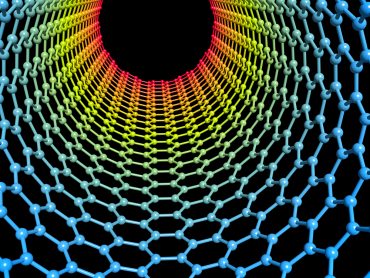
A new form of augmented intelligence combines multiple expert resources with deep algorithms and modeling to enable computer simulations that can anticipate events.
We flip a switch, plug in a phone, open the refrigerator, nuke a meal or snack, and rarely give the power source a thought until a heatwave or storm causes a temporary electrical outage. Even then, it’s an inconvenience and rarely a major disruption.
But what if widespread and frequent outages meant we couldn’t rely on the utility company to power our security systems, electric cars, streetlights, shopping centers, sports events… What if the power regularly went out for days or weeks?
Perhaps you think this isn’t possible with all our technological advances. But consider this. In most countries, and in much of the U.S., critical components of the electrical grid, including transmission and distribution lines, are reaching their end of life.
Equally troubling, a generation of specialized workers is nearing retirement, and power companies must somehow replace all the experience and knowledge related to the current infrastructure, even as they look to acquire expertise related to solar and wind generation and other innovations.
[ Related: How Real-Time Technology Keeps Electricity Flowing ]
And it’s not just the electrical grid. Water and gas utilities are facing similar challenges, and over the next 10 years, cities and regions are at risk of system failures that could lead to regular blackouts, pipeline explosions and contaminated water.
While some utilities have found innovative ways to move forward, many are overwhelmed by the size, cost and complexity of their challenges. They constantly struggle with how to prioritize upgrades, hiring, training, and investment in new technologies in ways that foster opportunity and minimize risk, all while staying within budget.
What’s a utility company to do?
To meet this challenge today, most decision makers would ask the heads of each department to report on their needs and the consequences of inaction. They might also hire an outside consultant to make recommendations based on what has worked at other utilities. But no matter the approach, the recommendations will be based on a relatively limited amount of information about the potential long-term impact of any specific strategy.
[ Related: Using AI to Optimize HVAC Is as Easy as Riding a Bike ]
This is because neither department heads nor the consultant has sufficient and reliable enough data and analysis at hand to predict the emergent phenomena (new scenarios that might arise from the interactions of different systems) and cascading effects (the ripple effects of a single decision throughout a connected, complex system).
For example, to optimally prioritize projects, a power company must gain insight into every possible short-term and long-term impact on its grid, from the effects of weather phenomena (such as climate change and El Niño), to the pace of adoption of electric cars and wind farms, to local trends related to “going green” or the use of new Christmas lights, to new federal, state, and local regulations.
Enter augmented intelligence
Gaining this insight is the domain of a new form of augmented intelligence called complex systems analysis, which combines multiple and various expert resources with deep algorithms and modeling to enable computer simulations that can anticipate events that would likely never occur to an industry expert.
Humans, by nature, develop an area of expertise because they don’t have the capacity to know everything about everything – and because that’s how our educational system works. And decision makers, by nature, must reconcile contradictory evidence and recommendations by “limiting the noise” and, in the end, rely on intuition to determine the best course of action.
Augmented intelligence embraces the noise, combining many different expert resources – even some that may appear off-the-wall – into a more massive comprehensive computer model that actually relies on far less raw data to run far more sophisticated simulations that show how specific events and decisions might play out. Based on the simulations, the computer model is iteratively refined to allow more and more clarity to emerge.
A utility company using augmented intelligence could build a model that includes knowledge related to all physical assets and human resources, financial metrics and constraints, geography and weather of the region, population trends, regulatory trends, supply chain issues and more.
[ Related: GE’s Big Selling Point: Asset Performance as a Service ]
The simulations based on the interaction of all these systems over time would be able to represent a holistic view of the company’s entire investment portfolio and provide insight into the impact of any particular decision on budgets, quality of service, and other risks. This, in turn, would provide decision makers with a clear understanding of the optimal trade-off between OpEx & CapEx spending on the one hand, and production and transmission reliability on the other.
A European utility, Réseau de Transport d’Électricité (RTE), has already begun taking advantage of this approach. It uses Augmented Intelligence-powered AIO (Asset Investment Optimization) software to optimize its maintenance strategy for cost, electricity quality, environmental impact and security. Over the short term, RTE expects to significantly reduce the cost of asset management while delivering the same level of service to customers. Augmented Intelligence software tools are also being used in the gas transmission and rail industries.
Augmented intelligence isn’t artificial intelligence
Don’t confuse Augmented Intelligence with AI. AI imitates human intelligence, just faster and at tremendous scale. It can access huge amounts of data about the past, find correlations, and then make predictions based on those correlations – all with tremendous speed. That’s why it can drive a car more safely than humans – instantly processing signals in the environment and taking the optimal course of action without hesitation or panic.
[ Related: How Virtual Power Plants Can Solve Grid Problems ]
However, only augmented intelligence is designed to look at a complex system like a utility grid and reveal the emergent phenomena and ripple effects of interacting systems and activities.
Still, it’s important to remember that augmented intelligence doesn’t predict the future. It isn’t a magic bullet that eliminates the need for a human to make a decision. Instead, it reveals possible outcomes of different decisions based on much less data, more human knowledge, and far more sophisticated analytics than has ever been possible. And it enables decision makers to explain their final decisions based on accessible cause-and-effect relationships.
In the face of aging infrastructures, retiring workforces and tight budgets, utility companies have tough decisions to make about their priorities if they want to keep the lights on, homes warm and taps flowing. With the risks that high, Augmented Intelligence can challenge and then extend and improve the intuition of decision makers.




























